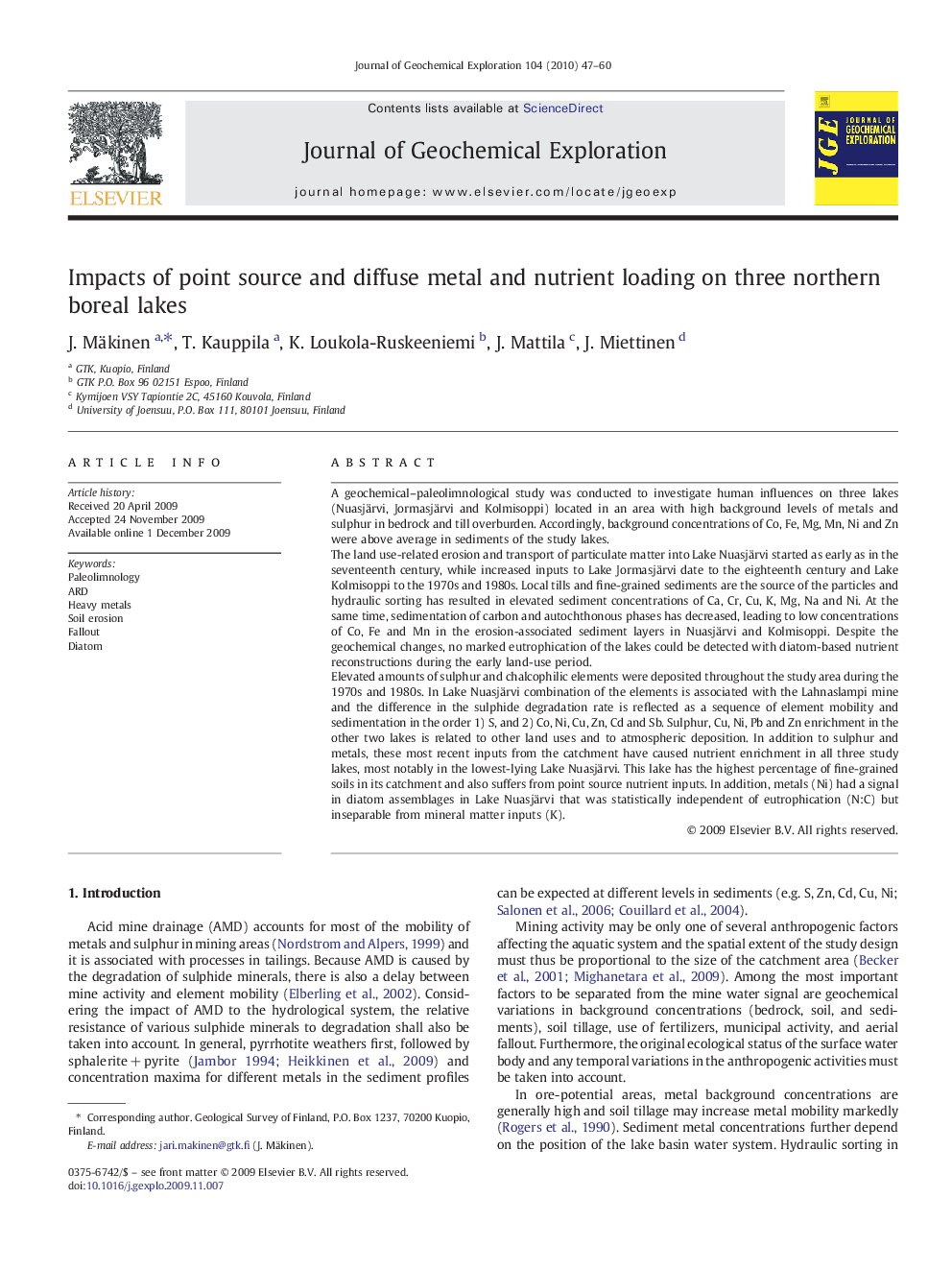| Article ID | Journal | Published Year | Pages | File Type |
|---|---|---|---|---|
| 4458052 | Journal of Geochemical Exploration | 2010 | 14 Pages |
A geochemical–paleolimnological study was conducted to investigate human influences on three lakes (Nuasjärvi, Jormasjärvi and Kolmisoppi) located in an area with high background levels of metals and sulphur in bedrock and till overburden. Accordingly, background concentrations of Co, Fe, Mg, Mn, Ni and Zn were above average in sediments of the study lakes.The land use-related erosion and transport of particulate matter into Lake Nuasjärvi started as early as in the seventeenth century, while increased inputs to Lake Jormasjärvi date to the eighteenth century and Lake Kolmisoppi to the 1970s and 1980s. Local tills and fine-grained sediments are the source of the particles and hydraulic sorting has resulted in elevated sediment concentrations of Ca, Cr, Cu, K, Mg, Na and Ni. At the same time, sedimentation of carbon and autochthonous phases has decreased, leading to low concentrations of Co, Fe and Mn in the erosion-associated sediment layers in Nuasjärvi and Kolmisoppi. Despite the geochemical changes, no marked eutrophication of the lakes could be detected with diatom-based nutrient reconstructions during the early land-use period.Elevated amounts of sulphur and chalcophilic elements were deposited throughout the study area during the 1970s and 1980s. In Lake Nuasjärvi combination of the elements is associated with the Lahnaslampi mine and the difference in the sulphide degradation rate is reflected as a sequence of element mobility and sedimentation in the order 1) S, and 2) Co, Ni, Cu, Zn, Cd and Sb. Sulphur, Cu, Ni, Pb and Zn enrichment in the other two lakes is related to other land uses and to atmospheric deposition. In addition to sulphur and metals, these most recent inputs from the catchment have caused nutrient enrichment in all three study lakes, most notably in the lowest-lying Lake Nuasjärvi. This lake has the highest percentage of fine-grained soils in its catchment and also suffers from point source nutrient inputs. In addition, metals (Ni) had a signal in diatom assemblages in Lake Nuasjärvi that was statistically independent of eutrophication (N:C) but inseparable from mineral matter inputs (K).
